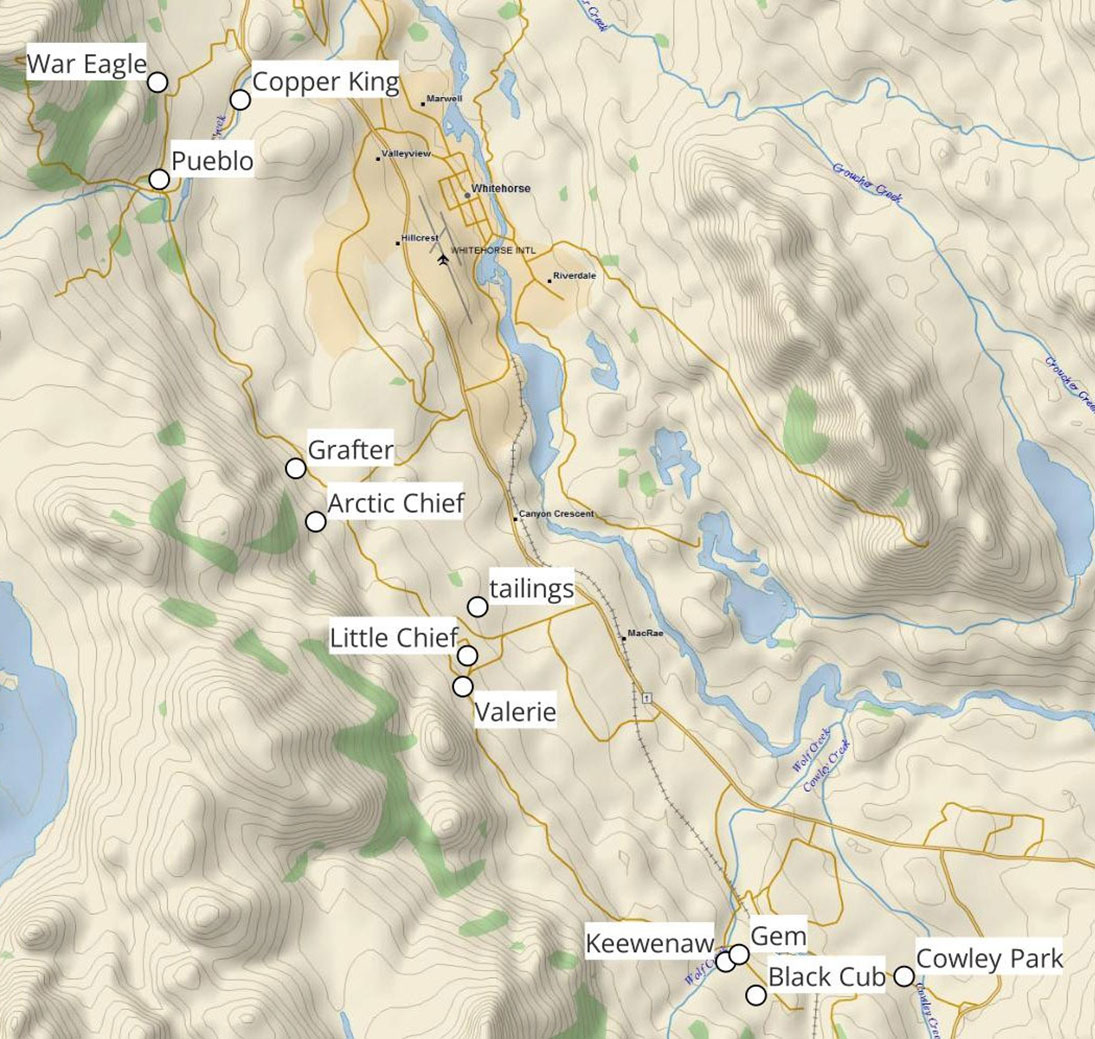
Photo by Photo Submitted
This image shows the general locations of sites mentioned in the accompanying article. Credit for map: Basemap © 2019 Garmin Ltd.

Photo by Photo Submitted
This image shows the general locations of sites mentioned in the accompanying article. Credit for map: Basemap © 2019 Garmin Ltd.
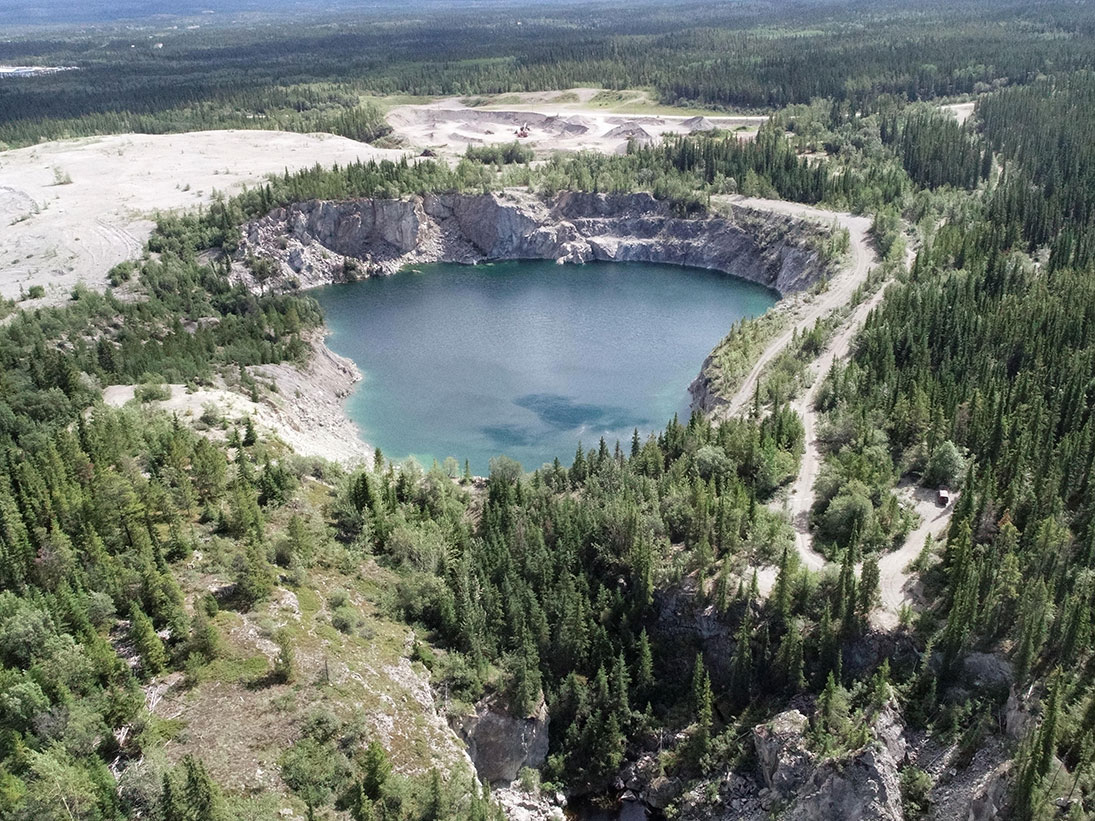
Photo by Photo Submitted
Little Chief pit, 90 metres deep, just off the Mt. Sima Road. When copper here had all been taken, mining operations went underground to feed the adjacent mill. Photo by TIM GREEN
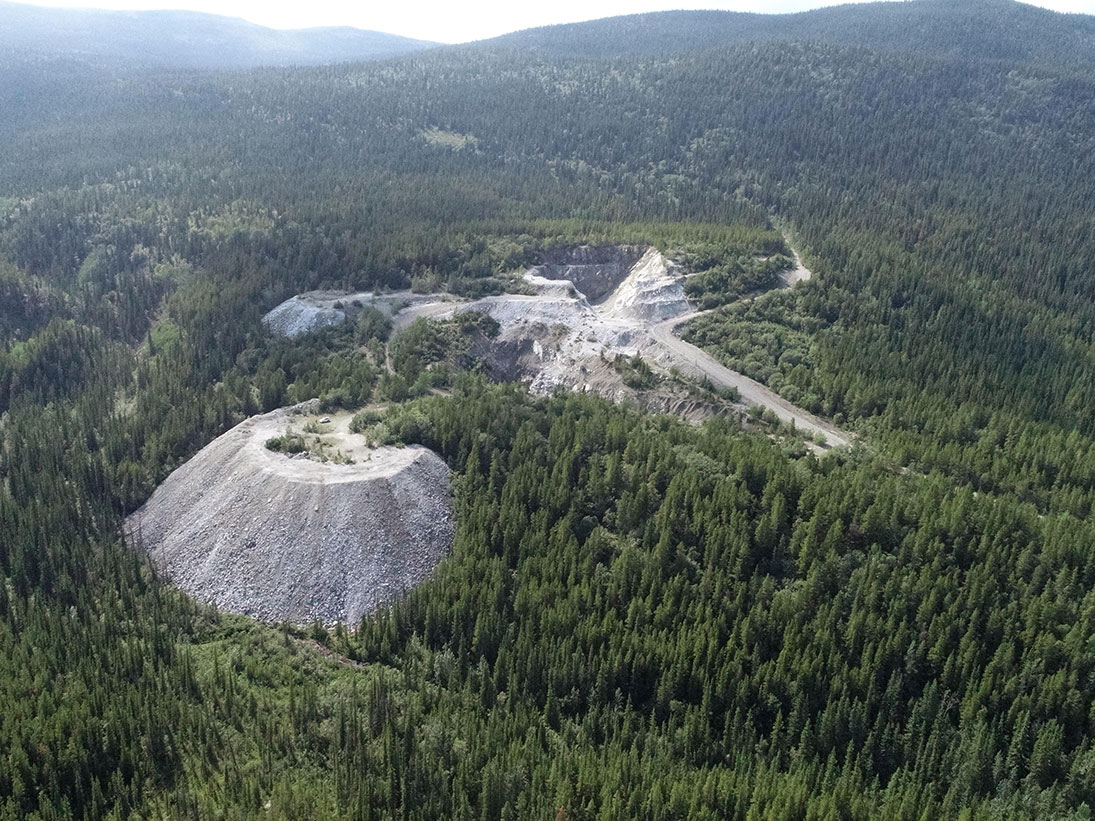
Photo by Photo Submitted
Arctic Chief on the Mt. McIntyre Road. The large waste rock pile (left) came from two open pits (centre). Photo by TIM GREEN
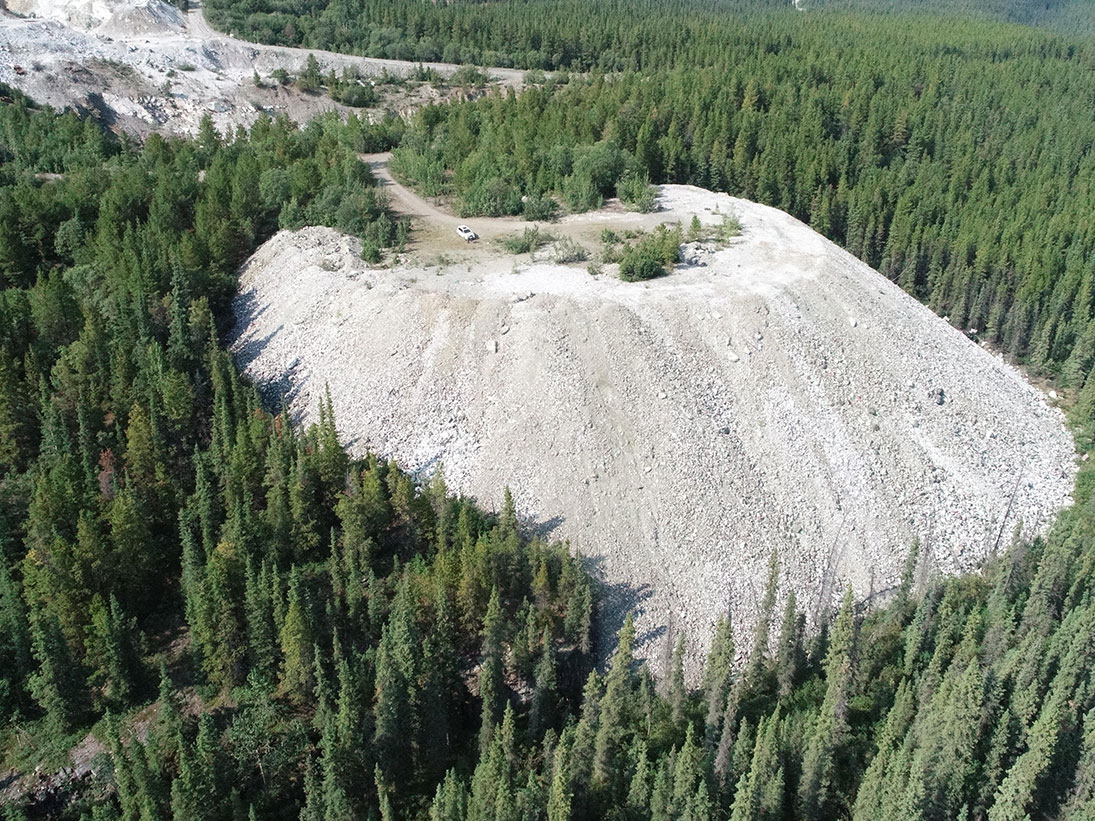
Photo by Photo Submitted
Waste rock pile at Arctic Chief. The car on top provides a rough idea of the large volume of rock that never went to the mill, discarded because it contained insufficient copper. Photo by TIM GREEN
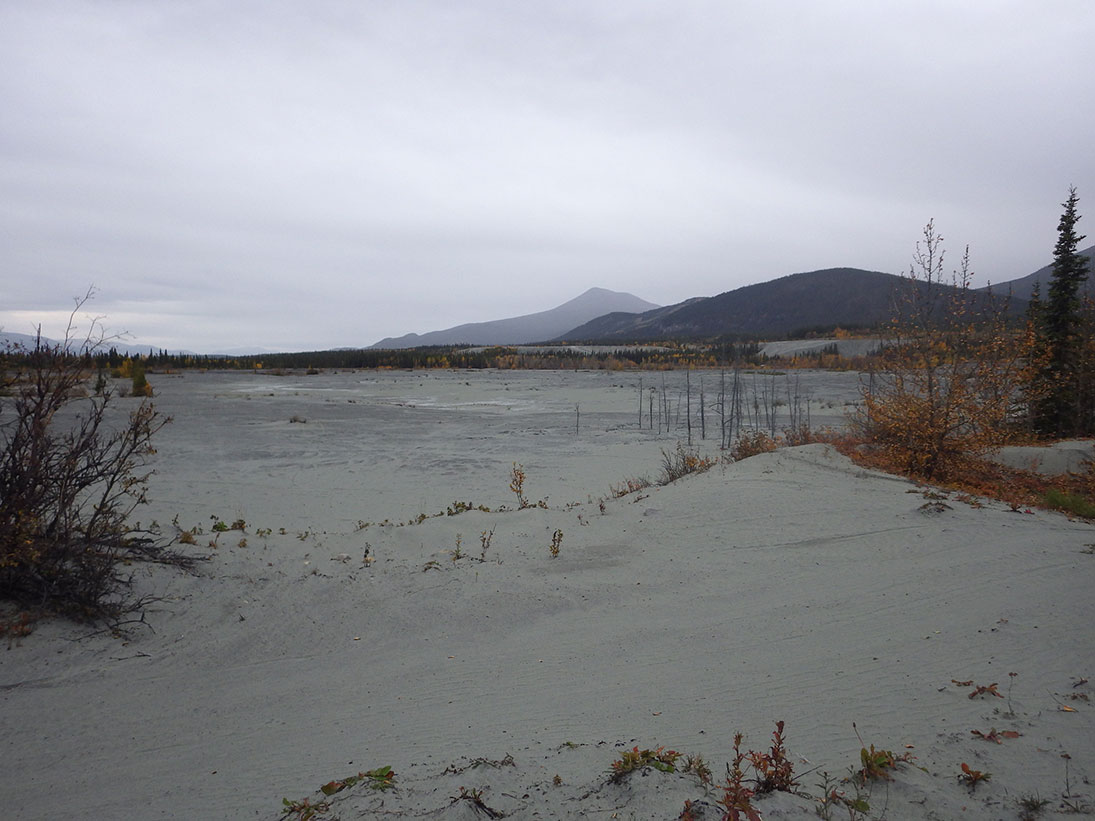
Photo by Photo Submitted
The fine-grained tailings, a waste byproduct of the milling process, were mixed with water and piped out into the very large tailings pond that now resembles the surface of the moon. Photo by TIM GREEN
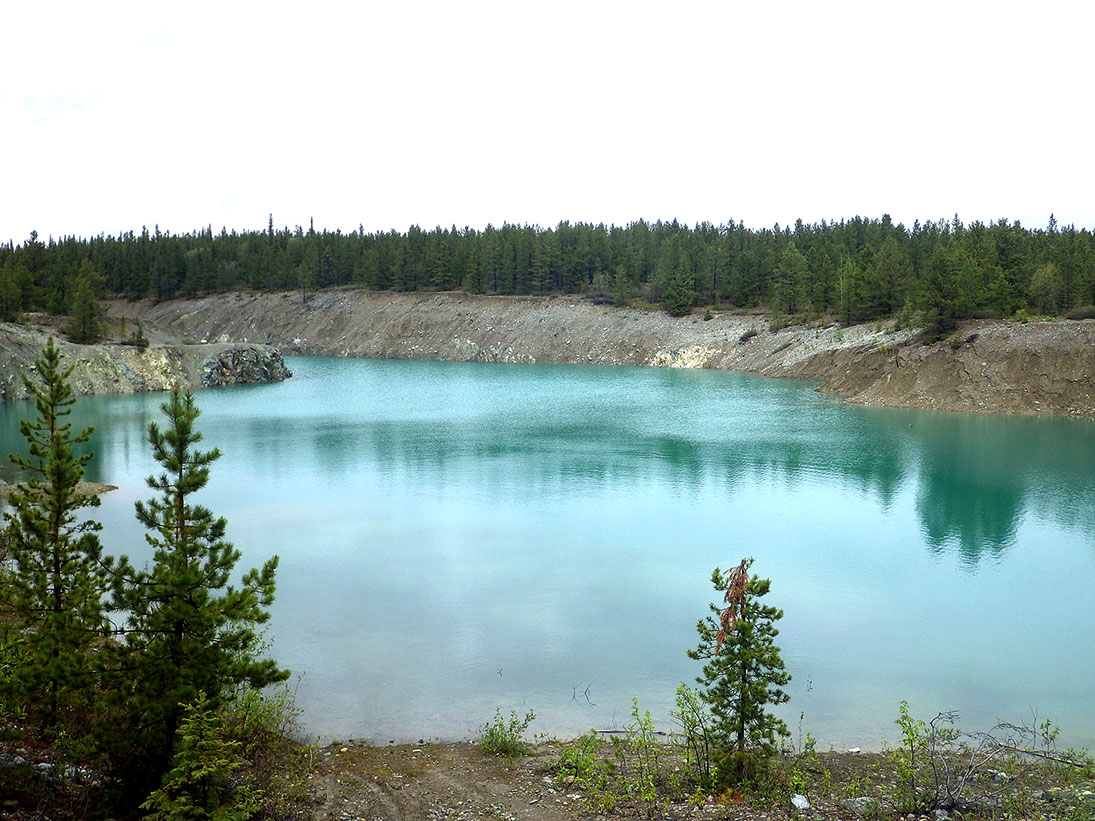
Photo by Photo Submitted
Black Cub near Mary Lake. Mining here ended in 1971, leaving known deposits of copper untouched. Photo by TIM GREEN
Gladiator Metals had its day in court in August.
Gladiator Metals had its day in court in August.
Or rather, several days in court, as the company was convicted of six offences under Yukon’s Quartz Mining Act.
In its drilling operations just south of the Cowley Creek subdivision, the company had carelessly, or perhaps cavalierly, created a mess and disregarded the conditions of its permit regarding heritage sites.
Every good court case needs chanting demonstrators at the courthouse.
The first day of the Gladiator case delivered familiar faces for this purpose.
Some hoped the judge would shut down Gladiator completely.
Others demanded, “No mines in my neighbourhood.”
Although emotions were high, there was little understanding by some protesters of what the case was really about.
By the third day at the end of August, the protests had coalesced into community impact statements to help the judge decide on sentencing.
Chasing Gladiator out of Yukon was not one of the options. And there are already mines here that predate our neighbourhoods.
So Gladiator received fines of $38,000 for the six offences, less than the $105,000 maximum in recognition of the degree of damage they had caused and the amount of work they had done to repair the damage where that was possible.
So now what?
Gladiator intends to continue looking for copper, which is on Canada’s list of strategic minerals. So that is a good thing.
And what better place to look than in the Whitehorse Copper Belt? The presence of copper there is no secret, although that comes as a surprise to some.
The Copper Belt is a 30-km arc around the west side of Whitehorse.
It stretches from near the landfill in the north to just past the Carcross Cutoff in the south. Most of it is inside Whitehorse city limits.
In the first decade of the 1900s, prospectors combed the area and opened many copper mines using the technology of the day.
Only a few of these mines actually went into production. Pueblo (corner of Fish Lake and Copper Haul roads) is the best known.
But there were also Copper King (under Raven’s Ridge), Grafter (roughly mid-point of the Copper Haul Road), and Valerie (junction of Mt. Sima and Copper Haul roads).
Whitehorse has always been a long way from the nearest smelter.
Transportation prices in the early 1900s were high, profit margins were small, and mines opened and closed as copper prices fluctuated.
The price of copper fell at the end of the First World War and the mines all shut down by 1920.
Mining companies explored the Copper Belt again using new technologies.
Noranda Mines found nothing worthwhile in the late 1940s. Hudson Bay Exploration and Development failed to find anything of interest in the early 1950s.
New Imperial Mines followed in the mid-1950s. They needed a decade and much drilling to find enough copper to justify a mill and to raise sufficient money to build it.
From 1967 to 1982, the company, which later became Whitehorse Copper, was a major employer in Whitehorse.
Because they had the mill in operation, New Imperial searched the Copper Belt intensively yet again for new sources of copper.
They quickly emptied significant open pits west of Mary Lake (Keewenaw, Black Cub), on the Mt. Mac Road (Arctic Chief), and behind the current landfill (War Eagle), hauling ore to the mill along the Copper Haul Road that they constructed for that purpose.
By 1972, the only source of copper left to feed the mill was Little Chief, conveniently located next to the mill just off the Mt. Sima Road.
Because they had already mined all the accessible copper in the Little Chief open pit, the company drove mining operations underground.
Ore that was concentrated in the Whitehorse mill went by rail to Skagway and then by ship to smelters Outside.
Tailings (fine rock powder mixed with water) that remained after the milling process were piped into the giant tailings pond. (Just off the Mt. Sima Road, the tailings are mostly dry today and would make a good movie set for a bleak alien planet adventure.)
By 1982, copper prices were down and ore in the underground mine at Little Chief was too expensive to extract.
Because the company had found no other sources that were sufficiently high grade or easy to recover, the mine closed.
But that is not to say there was no more copper.
Whitehorse Copper knew that Cowley Park, the area just south of the Cowley Creek subdivision, had a large untapped reserve.
They had even run 5,000 tonnes of Cowley Park ore through their mill but decided it was not sufficiently high grade for the economics of the day.
The company had also cleared an area (Gem) behind Mary Lake in preparation for mining and left other known nearby sources of ore partially unmined (Black Cub, Keewenaw) when they ran into production problems.
Fast-forward to 2023. Along comes Gladiator Metals.
They would like to show that the Copper Belt still holds significant copper that will reveal itself to new exploration of known areas or maybe to new interpretation of old results.
Things have changed in the last century: transportation costs, commodity prices, mining techniques and local infrastructure, for example.
Perhaps these will make the remaining Whitehorse deposits viable in the 21st century, more than they were in 1920 or in 1982.
And where will Gladiator be looking? Cowley Park, Gem, and Black Cub for a start, of course, because that is where the known copper deposits are.
And then farther north, in places that would have been quite familiar to prospectors over the past 120 years.
In doing so, Gladiator is the fifth company to comb exactly the same area in hopes of triggering a third wave of mining for the same commodity.
For this to happen, Gladiator needs a combination of two things.
First, they need to find sufficient quantities of copper to make setting up some sort of Whitehorse operation feasible. Six months of supply would not justify building a mill, for example.
Second, the ore they find must be of sufficiently high grade to make this all economical.
So how much do they need? That answer will depend on a detailed economic analysis of various cost versus revenue factors, including the quality of the ore they find.
Just for fun, have a look at the satellite images of the existing open pits along the Copper Haul Road.
They were all mined out in five years, late 1960s to 1970s.
Consider the size of the holes in the ground and the volume of the adjacent waste rock piles. The difference is what went to the mill.
And then subtract the tailings in the tailings pond at Little Chief — check the images of that too. The remaining volume was copper concentrate that was then further reduced in the Outside smelter.
Takeaway: A viable copper operation requires a very large volume of ore.
And how soon?
For the sake of comparison, consider the Casino project northwest of Carmacks. It is also copper.
The first observations of hardrock metals there were in 1936. Over the years, many companies explored the area to various degrees.
The current owners purchased the rights in 2006 but do not expect to start building the mine until at least 2026, Yukon Environmental and Socio-economic Assessment Board and other approvals being what they are. Mine development is not a quick process.
Gladiator is an exploration company, not a mining company. So even if they do find a large volume of copper ore of sufficiently high grade in the Whitehorse Copper Belt today, that does not mean a new mine in our back yards tomorrow.
There would be many technical, financial and regulatory hurdles to overcome first. Those would take time. Lots of time.
Rest assured that there will be many more chances for public input before Whitehorse has another copper mine.
In the meantime, it would be really nice if Gladiator would clean up their mess, follow the rules and be better neighbours.
For more information on the Whitehorse Copper Belt with maps and photos of the locations discussed in this article, or to check if this really is in your back yard, see https://then.timmit.ca/projects/index.shtml#WCB
Tim Green is a Whitehorse-based engineer and history hiker. He has studied and documented the current state of mines in the Whitehorse Copper Belt in their historical context.
© 2023 Timothy C. Green
By Tim Green
In order to encourage thoughtful and responsible discussion, website comments will not be visible until a moderator approves them. Please add comments judiciously and refrain from maligning any individual or institution. Read about our user comment and privacy policies.
Your name and email address are required before your comment is posted. Otherwise, your comment will not be posted.
Be the first to comment